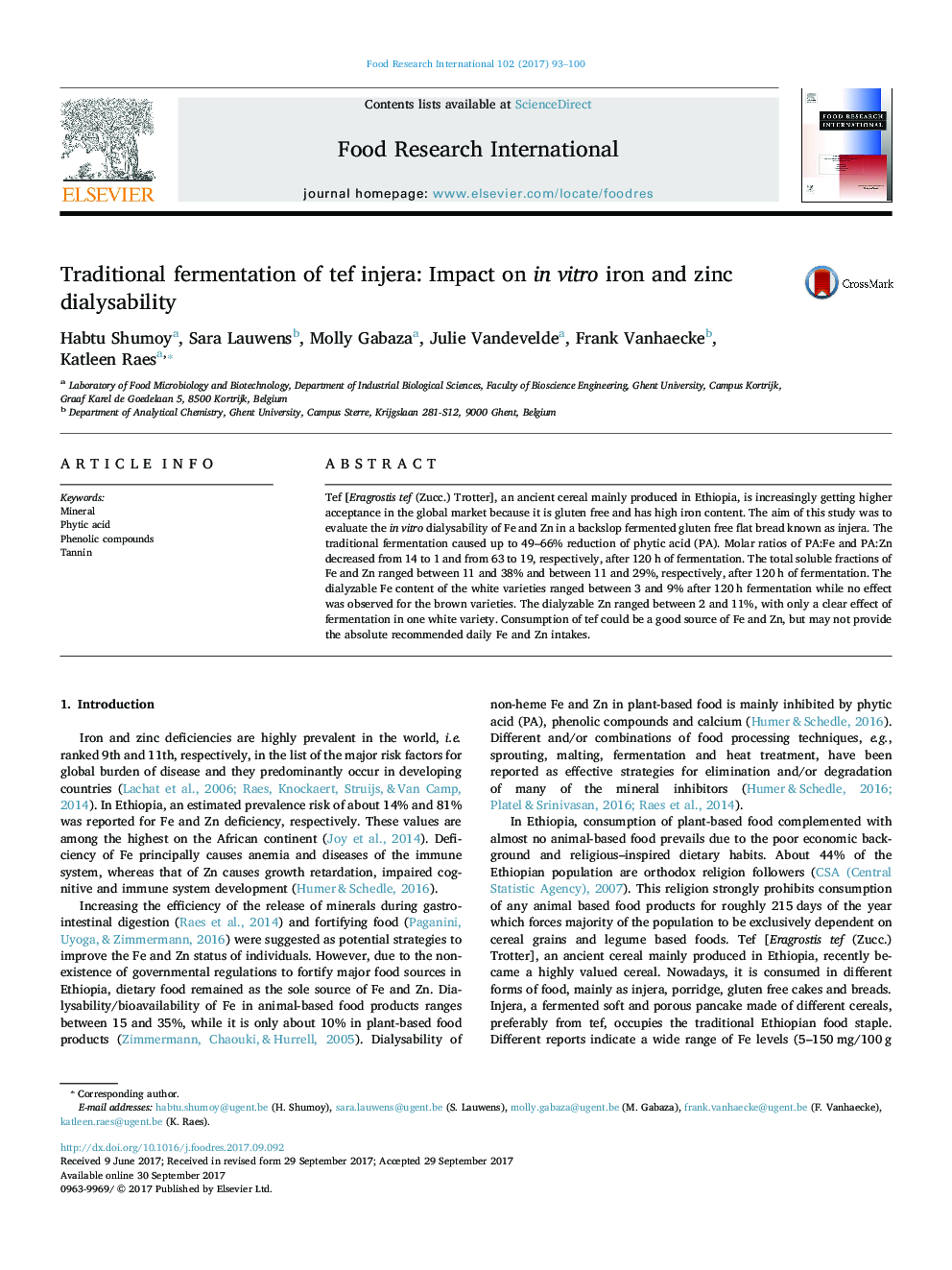| کد مقاله | کد نشریه | سال انتشار | مقاله انگلیسی | نسخه تمام متن |
|---|---|---|---|---|
| 5767766 | 1628449 | 2017 | 8 صفحه PDF | دانلود رایگان |
- Traditional fermentation of tef injera could reduce about 50% of the phytic acid (PA).
- The PA:mineral molar ratio may not be a good indicator of Fe and Zn dialysability.
- A high Fe level in tef varieties may not necessarily result in a higher Fe dialysability.
- Tef fermentation has slightly increased the dialysability of Fe and Zn.
Tef [Eragrostis tef (Zucc.) Trotter], an ancient cereal mainly produced in Ethiopia, is increasingly getting higher acceptance in the global market because it is gluten free and has high iron content. The aim of this study was to evaluate the in vitro dialysability of Fe and Zn in a backslop fermented gluten free flat bread known as injera. The traditional fermentation caused up to 49-66% reduction of phytic acid (PA). Molar ratios of PA:Fe and PA:Zn decreased from 14 to 1 and from 63 to 19, respectively, after 120Â h of fermentation. The total soluble fractions of Fe and Zn ranged between 11 and 38% and between 11 and 29%, respectively, after 120Â h of fermentation. The dialyzable Fe content of the white varieties ranged between 3 and 9% after 120Â h fermentation while no effect was observed for the brown varieties. The dialyzable Zn ranged between 2 and 11%, with only a clear effect of fermentation in one white variety. Consumption of tef could be a good source of Fe and Zn, but may not provide the absolute recommended daily Fe and Zn intakes.
121
Journal: Food Research International - Volume 102, December 2017, Pages 93-100
